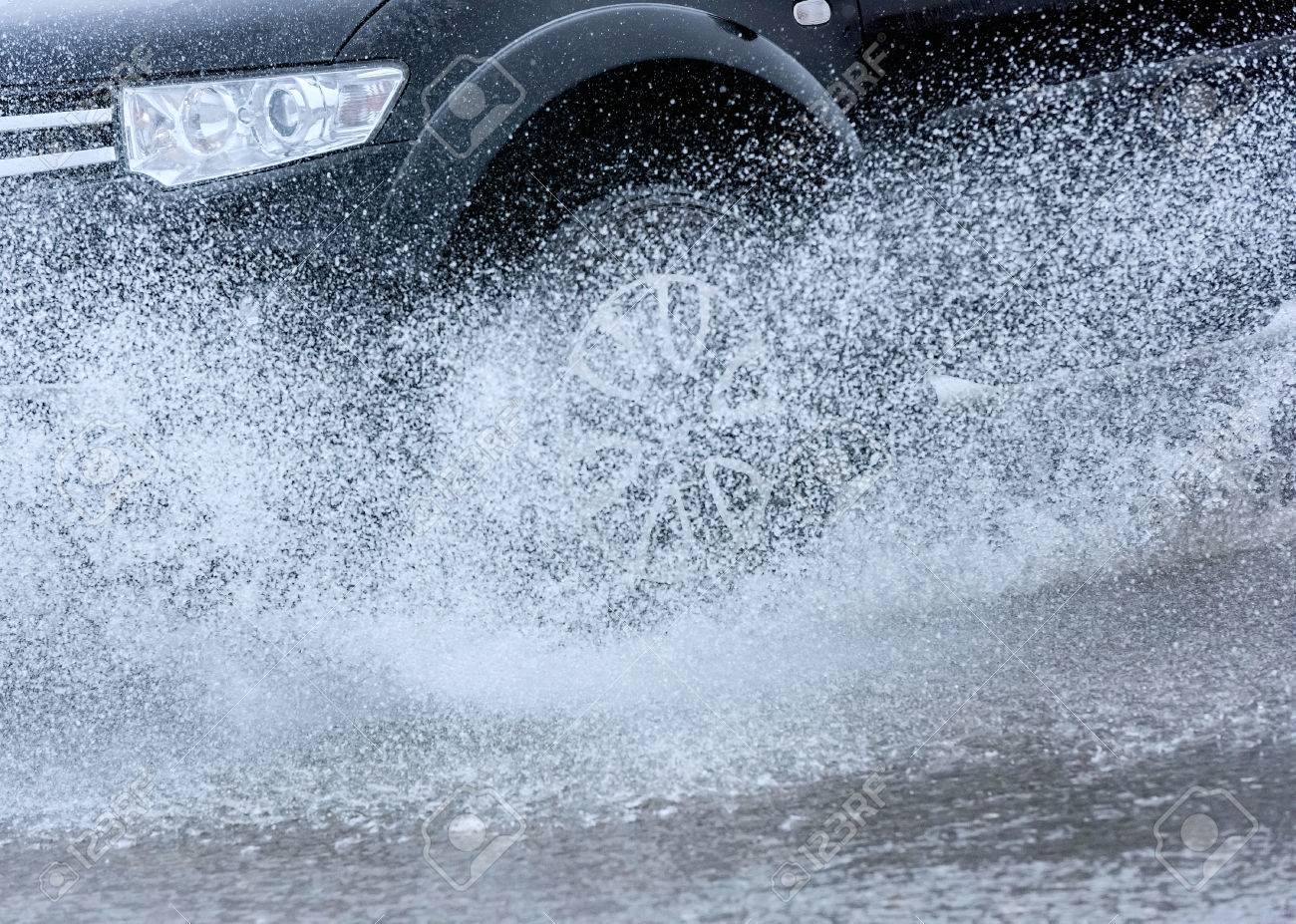From Raindrops to Road Hazards: Here's What You Need to Know About Hydroplaning
Rain is relatively rare in Phoenix, but when it rains during the monsoon season, it pours – usually coming down fast and hard. Recent storms reminded us of that!
The sudden change in road conditions in a downpour can catch even the best drivers off guard. One of the biggest dangers of wet roads is hydroplaning – a terrifying experience where your tires lose contact with the pavement and your car feels like it’s gliding out of control. Because it is.
Related: 6 Tips for Driving Safely During Monsoons in Phoenix

What is Hydroplaning?
Hydroplaning occurs when your tires can’t channel water away fast enough. Instead of gripping the road, they ride on top of a thin layer of water. This loss of traction makes steering, braking, and accelerating difficult – even impossible – for a few scary seconds. This can typically occur at higher speeds during heavy rain or when driving through standing water.
Drivers often describe hydroplaning as if their car is “floating” or sliding uncontrollably. The steering wheel might feel loose, unresponsive, or suddenly too light. You might also feel your vehicle drifting sideways. While hydroplaning usually lasts only a few seconds, it can be enough to cause a dangerous spin or collision.
How to Avoid Hydroplaning
Prevention is the best protection. Here are some key tips to reduce your risk.
- Slow down in the rain. Hydroplaning is more likely at higher speeds, especially over 45 mph.
- Avoid standing water. Puddles, dips in the road, and poorly drained intersections are hotspots.
- Keep your tires in good shape. Proper tread depth and inflation help channel water away.
- Don’t use cruise control. Staying in full control allows you to respond faster to changing traction.
- Brake and steer gently. Sudden movements can break traction easily on wet pavement.
What to Do if You Start to Hydroplane
If you feel your vehicle start to hydroplane, stay calm and follow these steps.
- Ease off the gas. Your instinct might be to hit the brakes. Don't. Don't press the gas either. Gently letting off the gas pedal allows your car to slow naturally and your tires to regain grip.
- Steer gently in the direction you want to go. You don't need to turn into the skid. Keep your hands steady. Avoid jerking the wheel. You don't want to overcorrect.
- Wait for traction to return. Once your tires reconnect with the road, you’ll feel control return. That's when you can gently brake or accelerate as needed.
Why Hydroplaning is a Bigger Risk in Phoenix
Hydroplaning poses a greater danger for drivers in Phoenix and the West Valley because of the unique weather and road conditions in the area. After long stretches of dry heat, Arizona roads accumulate oil and debris that mix with the first rainfall, creating extremely slick surfaces.
During monsoon storms, heavy downpours can overwhelm drainage systems, leaving standing water in low spots and on flooded streets throughout cities like Goodyear, Glendale, and Surprise. These conditions make it easier for vehicles to lose traction and hydroplane, especially at higher speeds. Staying alert, reducing speed during storms, and keeping your tires properly maintained are the best defenses against this seasonal hazard.
Stay Road-Ready with Coulter Nissan
At Coulter Nissan, we want drivers in Phoenix and throughout the West Valley to stay safe by understanding how hydroplaning works, what causes it, and how proper tire maintenance can help reduce the risk. The right tires, brakes, and regular vehicle maintenance can make a huge difference in wet-weather safety. At Coulter Nissan, our service team is here to keep your car ready for Arizona’s unpredictable monsoon weather.
Schedule your tire inspection or service today with Coulter Nissan and drive with confidence, rain or shine.